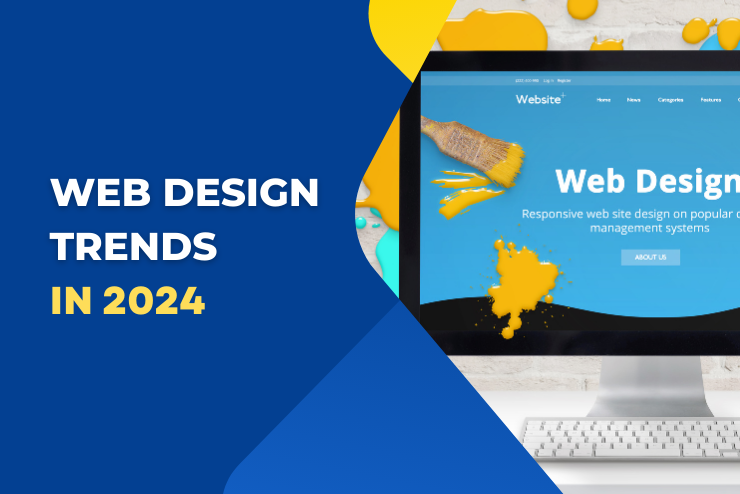Web Design Trends in 2024 for a Stunning Online Presence
In the ever-evolving landscape of the digital world, web design trends play a pivotal role in shaping the online experience. As we step into 2024, the realm of web design is witnessing a fascinating evolution, marked by innovative approaches and user-centric designs. In this blog post, we’ll delve into the key web design trends that are dominating the scene this year, with a particular emphasis on the importance of responsive designs. Responsive Designs: A Cornerstone of Web Development in 2024 The significance of responsive web design cannot be overstated in 2024. With an increasing number of users accessing websites through a variety of devices, creating a seamless and consistent experience across all platforms has become imperative. 1. Mobile-First Approach As mobile usage continues to soar, designers are adopting a mobile-first approach. This means crafting designs with mobile devices in mind first, and then scaling up to larger screens. This approach ensures that the user experience is optimized for the smallest screens, providing a solid foundation for a responsive design. 2. Advanced Grid Systems Grid systems have come a long way, and in 2024, we see the rise of advanced grid systems that adapt effortlessly to different screen sizes. These grids help maintain visual harmony while ensuring that content remains easily consumable, regardless of the device. 3. Dynamic Typography Web designers are increasingly experimenting with dynamic typography to enhance the readability and visual appeal of websites. Fonts that automatically adjust to the screen size and resolution contribute to a responsive design that adapts gracefully to various devices. Visual Trends Shaping the Web Design Landscape: 1. Immersive Multimedia In 2024, websites are becoming more immersive with the integration of multimedia elements such as videos, animations, and interactive graphics. This not only engages users but also demands responsive design principles to maintain a compelling experience across diverse platforms. 2. Dark Mode Dominance Dark mode continues to gain popularity for its aesthetic appeal and reduced eye strain. Web designers are incorporating dark mode options into their designs, providing users with a visually comfortable experience. Ensuring the responsiveness of these dark-themed interfaces is a key consideration in contemporary web design. 3. Minimalistic Aesthetics Minimalism remains a timeless trend, with designers opting for clean layouts and simplified interfaces. This design philosophy not only enhances user focus but also facilitates smoother adaptation to various screen sizes. The Bottom Line The evolution of web design trends underscores the importance of responsive designs. From a mobile-first approach to dynamic typography and immersive multimedia experiences, the emphasis on adaptability and user-centricity is shaping the way websites are crafted. By embracing these trends, web designers are not only staying ahead of the curve but also ensuring that users enjoy a seamless and engaging online experience across all devices. The future of web design is undoubtedly exciting, promising even more innovations and user-friendly interfaces. At DIP Outsource, we’re passionate about building websites that not only embrace the trends of today but also set the stage for the digital landscape of tomorrow. Join us on this journey, and let’s create a website that not only meets but exceeds the expectations of the modern user. Stay ahead, stay innovative, and let your website be a testament to the dynamic spirit of the digital age.

